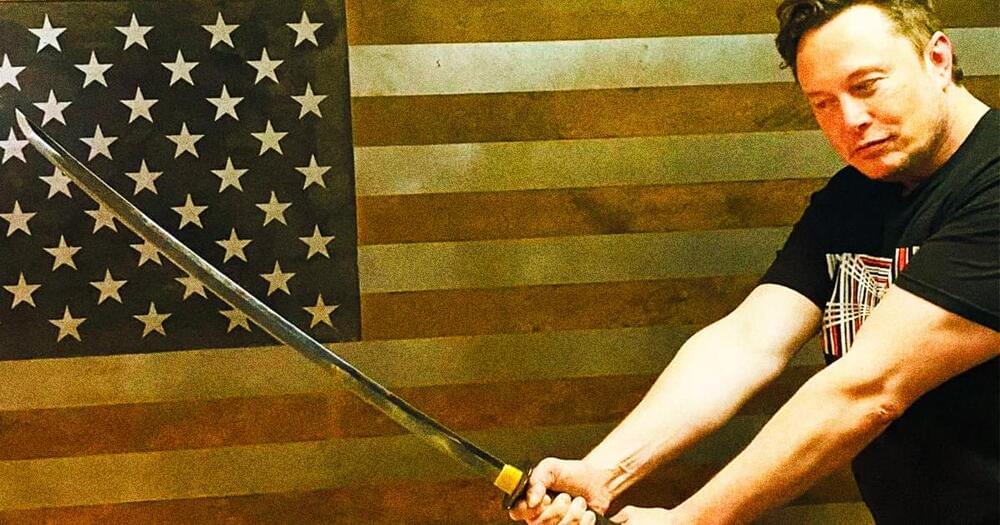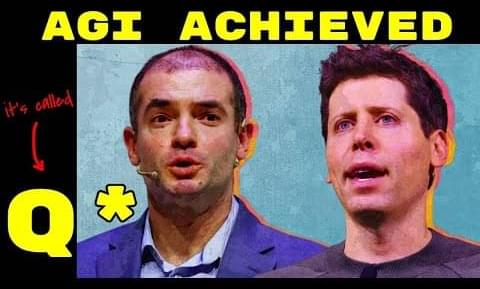X CEO Elon Musk posted on the social media platform on Tuesday, “There is a large graveyard filled with my enemies.”


Vernor Vinge is one of the foremost thinkers about the future of artificial intelligence and the potential for a technological singularity to occur in the coming decades. He’s a science fiction writer who’s had a profound impact on a wide range of authors including: William Gibson, Charles Stross, Neal Stephenson and Dan Simmons.
Many of Vinge’s works are brilliant. Among them are some of my all-time favorites in the SF genre. And he’s been recognized with numerous awards, including seven Hugo nominations and five wins, despite writing only eight novels and 24 short stories and novellas over a span of five decades.
In this video, I discuss his early works from the 1960s to the 1980s. His later works from the 1980s onward are the subject of my next video.
0:42 What is a technological singularity?
4:51 A.I. in science fiction history.
5:38 Should we be afraid?
6:59 Who is Vernor VInge?
8:50 Short stories.
11:26 Tatja Grimm’s World (1969, 1987)
13:47 The Witling (1976)
17:40 True Names (1981)
#booktube #booktubesff #sciencefiction #scifi #singularity #artificialintelligence #sf
How are we so smart? We seem to be able to make process data with ease, doing tasks in seconds that take supercomputers much longer. Well, one thought is that we fundamentally take advantage of quantum mechanics to perform calculations similar to a quantum computer. This would give us a biologically produced quantum speed up in our brains. Until recently this was just a thought, there is no evidence that this is true. Well, now scientists believe that they may have found evidence of quantum interaction in our brains. Even more importantly, they showed that these quantum interactions are related to our consciousness. In this video, I discuss these latest results.
— References —
[1] https://iopscience.iop.org/article/10.1088/2399-6528/ac94be.
[2] https://phys.org/news/2022-10-brains-quantum.html.
[3] https://scitechdaily.com/shocking-experiment-indicates-our-b…mputation/
— Socials –
Twitter: https://twitter.com/BroadwayPhysics.
Discord: https://discord.gg/SH4xvHQY
Publications: https://scholar.google.com.au/citations?user=f-yIdjMAAAAJ&hl=en&authuser=2
— Equipment —
If you are interested in some of the equipment that I use to make these videos you can find the information below.
Camera: https://amzn.to/3VSpxfY
Audio: https://amzn.to/3Mgv3pw and https://amzn.to/3LXF7CH and https://amzn.to/3HXfTmE
Lighting: https://amzn.to/41qYKbS and https://amzn.to/3O5Vekp.
Teleprompter: https://amzn.to/3puDrZI
0:00 — Quantum Brains?
0:37 — Why is this good?
2:41 — Measuring entanglement.
5:33 — Quantum Consciouness.
#quantum #science #physics #breakthrough #quantumcomputer

Last year, Voyager 1’s attitude articulation and control system (AACS) started sending random data back to Earth, and it took NASA engineers months to figure out why. It turns out the AACS had entered an incorrect mode, but it’s unclear why the mode switch happened in the first place. This software patch is meant to stop the same thing happening to Voyager 2 (and to Voyager 1 again).
Suzanne Dodd, Voyager project manager, explains “this patch is like an insurance policy that will protect us in the future and help us keep these probes going as long as possible … These are the only spacecraft to ever operate in interstellar space, so the data they’re sending back is uniquely valuable to our understanding of our local universe.”
As Voyager 2 is over 12 billion miles away, it took over 18 hours to send the software patch to the probe on Friday. There is a risk the patch could overwrite essential code or have unintended consequences, so a readout of AACS memory is being carried out to make sure it’s in the right place. If no anomalies are found, the update will be triggered on Oct. 28.


People who have gone into cardiac arrest can get treatment faster if a drone delivers a defibrillator, but there needs to be someone nearby trained in CPR, shows a trial in Sweden.
By David Cox

As organizations grow, they begin to prioritize process over product. That impedes real innovation. When organizations realize this, they typically respond in three ways: By hiring consultants to do a reorg (that’s “organizational theater”), adopt new processes such as hackathons to spur innovation (that’s “innovation theater”), or take steps to try to reform their bureaucratic behaviors (that’s “process theater”). Instead, what organizations need is an Innovation Doctrine that addresses culture, mindset, and process and guides the organization’s efforts to achieve real innovations.
Page-utils class=” article-utils—vertical hide-for-print” data-js-target=” page-utils” data-id=” tag: blogs.harvardbusiness.org, 2007/03/31:999.242633” data-title=” Why Companies Do “Innovation Theater” Instead of Actual Innovation” data-url=”/2019/10/why-companies-do-innovation-theater-instead-of-actual-innovation” data-topic=” Innovation” data-authors=” Steve Blank” data-content-type=” Digital Article” data-content-image=”/resources/images/article_assets/2019/10/Oct19_07_-513439309-383x215.jpg” data-summary=”
They put too much focus on process and not enough on product.

Exclusive: OpenAI researchers warned board of AI breakthrough ahead of CEO ouster, sources say https://www.reuters.com/technology/sam-altmans-ouster-openai…11-22/ OpenAI Made an AI Breakthrough Before Altman Firing, Stoking Excitement and Concern https://www.theinformation.com/articles/openai-made-an-ai-br…nd-concern The Bitter Lesson http://www.incompleteideas.net/IncIdeas/BitterLesson.html Get on my daily AI newsletter 🔥 https://natural20.beehiiv.com/subscribe [News, Research and Tutorials on AI] See more at: https://natural20.com/ My AI Playlist: https://www.youtube.com/playlist?list=PLb1th0f6y4XROkUAwkYhcHb7OY9yoGGZH

Year 2021 face_with_colon_three
Sustainabilitycommunity.springernature.com.
Climate resilient coffee crops are urgently required, but to be successful they must also satisfy consumer preferences for flavour. New research reveals that stenophylla coffee, a rare wild species from West Africa, is not only markedly heat tolerant but also has an exquisite taste.